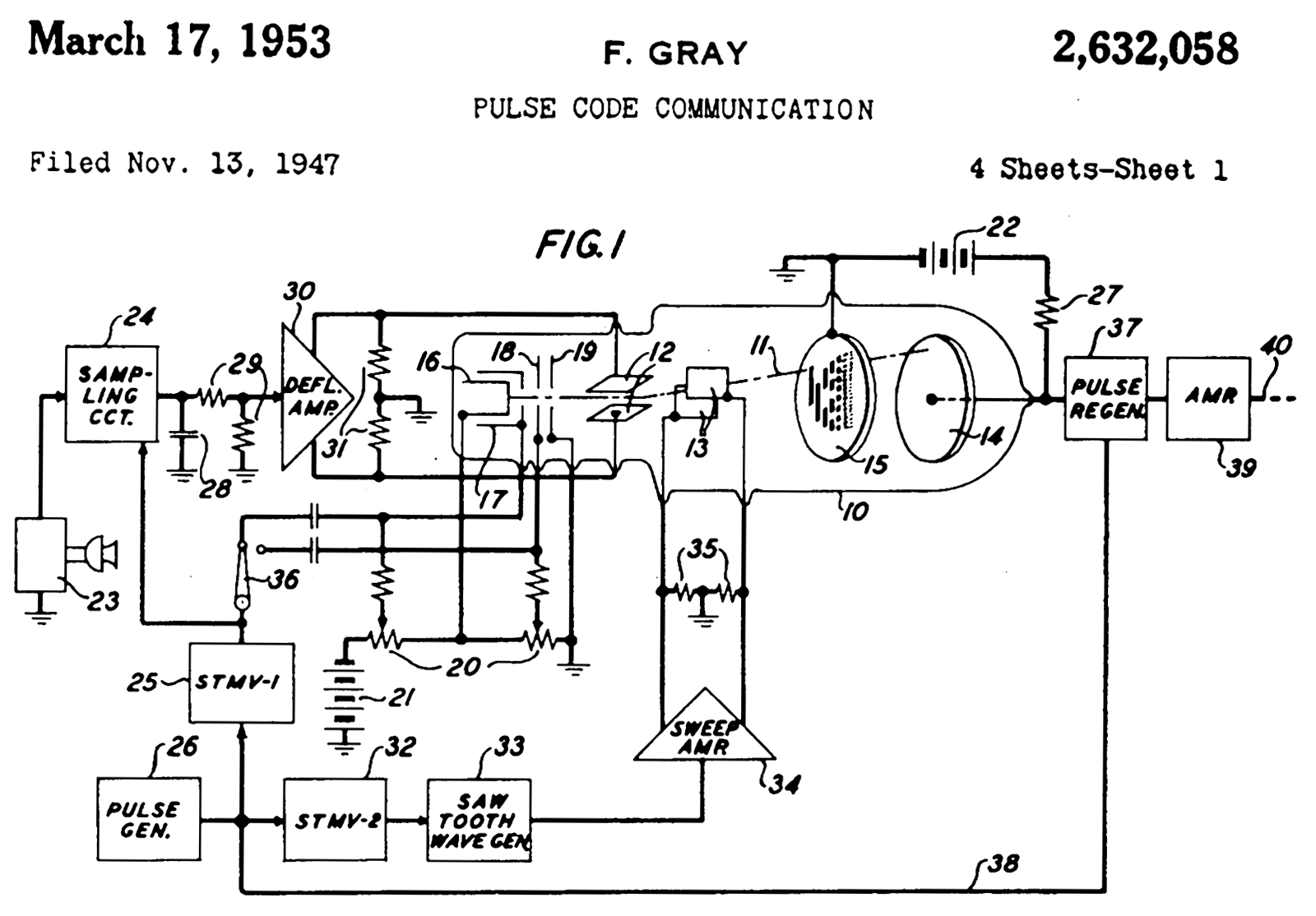Frank Gray (researcher) on:
[Wikipedia]
[Google]
[Amazon]
Frank Gray (13 September 1887 – 23 May 1969) was a physicist and researcher at
 With
With
Science Newsletter, 16 April 1927 (reproduced at Science News Online)
"How New Television Process Works" with Gray's flying-spot scanner innovation
1930 booklet by AT&T, wit
photo of Frank Gray
Scientists at Bell Labs 1887 births 1969 deaths {{US-engineer-stub
Bell Labs
Nokia Bell Labs, originally named Bell Telephone Laboratories (1925–1984),
then AT&T Bell Laboratories (1984–1996)
and Bell Labs Innovations (1996–2007),
is an American industrial research and scientific development company owned by mult ...
who made numerous innovations in television, both mechanical and electronic, and is remembered for the Gray code
The reflected binary code (RBC), also known as reflected binary (RB) or Gray code after Frank Gray, is an ordering of the binary numeral system such that two successive values differ in only one bit (binary digit).
For example, the representati ...
.
The Gray code
The reflected binary code (RBC), also known as reflected binary (RB) or Gray code after Frank Gray, is an ordering of the binary numeral system such that two successive values differ in only one bit (binary digit).
For example, the representati ...
, or reflected binary code (RBC), appearing in Gray's 1953 patent, is a binary numeral system
A binary number is a number expressed in the base-2 numeral system or binary numeral system, a method of mathematical expression which uses only two symbols: typically "0" (zero) and "1" ( one).
The base-2 numeral system is a positional notatio ...
often used in electronics
The field of electronics is a branch of physics and electrical engineering that deals with the emission, behaviour and effects of electrons using electronic devices. Electronics uses active devices to control electron flow by amplification ...
, but with many applications in mathematics
Mathematics is an area of knowledge that includes the topics of numbers, formulas and related structures, shapes and the spaces in which they are contained, and quantities and their changes. These topics are represented in modern mathematics ...
.
Gray conducted pioneering research on the development of television
Television, sometimes shortened to TV, is a telecommunication medium for transmitting moving images and sound. The term can refer to a television set, or the medium of television transmission. Television is a mass medium for advertisin ...
; he proposed an early form of "flying spot scanner
A flying-spot scanner (FSS) uses a scanning source of a spot of light, such as a high-resolution, high-light-output, low-persistence cathode ray tube (CRT), to scan an image. Usually the image to be scanned is on photographic film, such as moti ...
" for early TV systems in 1927, and helped develop a two-way mechanically scanned TV system in 1930.
With Pierre Mertz, Gray wrote the classic paper on the mathematics of raster scan
A raster scan, or raster scanning, is the rectangular pattern of image capture and reconstruction in television. By analogy, the term is used for raster graphics, the pattern of image storage and transmission used in most computer bitmap image s ...
systems in 1934. He later participated in the early days of the digital revolution, with Raymond W. Sears, William M. Goodall, John Robinson Pierce
John Robinson Pierce (March 27, 1910 – April 2, 2002), was an American engineer and author. He did extensive work concerning radio communication, microwave technology, computer music, psychoacoustics, and science fiction. Additionally to hi ...
, and others at Bell Labs, by providing the binary code used by Sears in his PCM tube, a beam deflection tube
Beam deflection tubes, sometimes known as sheet beam tubes, are vacuum tubes with an electron gun, a beam intensity control grid, a screen grid, sometimes a suppressor grid, and two electrostatic deflection electrodes on opposite sides of the e ...
of the type that Sears and Pierce collaborated on, which was used in Goodall's "Television by pulse code modulation".
Early life
Gray graduated fromPurdue University
Purdue University is a public land-grant research university in West Lafayette, Indiana, and the flagship campus of the Purdue University system. The university was founded in 1869 after Lafayette businessman John Purdue donated land and money ...
in 1911 with a degree in Physics.
Patents
 With
With Herbert E. Ives
Herbert Eugene Ives (July 31, 1882 – November 13, 1953) was a scientist and engineer who headed the development of facsimile and television systems at AT&T in the first half of the twentieth century. He is best known for the 1938 Ives–Stilwel ...
as co-inventor, Gray filed for two US patents in 1927: "Electro-optical system" (US 2,037,471, issued 14 April 1936) and "Electro-optical transmission" (US 1,759,504, issued 20 May 1930), and one in just his own name: "Television system" (US 2,113,254, issued 5 April 1938). He patented many other similar-sounding inventions over the years that followed.
His 1953 patent "Pulse Code Communication" with the Gray code was filed in 1947.
References
External links
Science Newsletter, 16 April 1927 (reproduced at Science News Online)
"How New Television Process Works" with Gray's flying-spot scanner innovation
1930 booklet by AT&T, wit
photo of Frank Gray
Scientists at Bell Labs 1887 births 1969 deaths {{US-engineer-stub